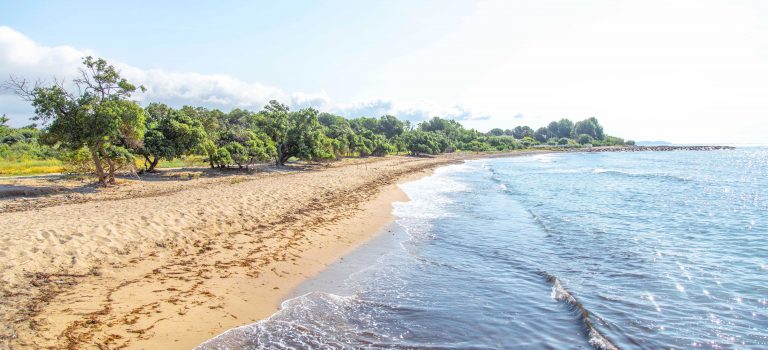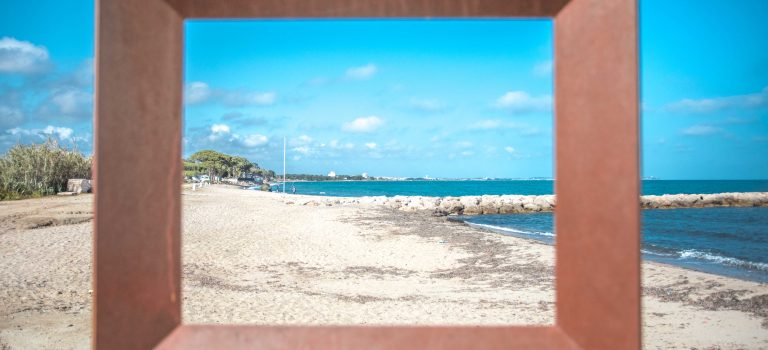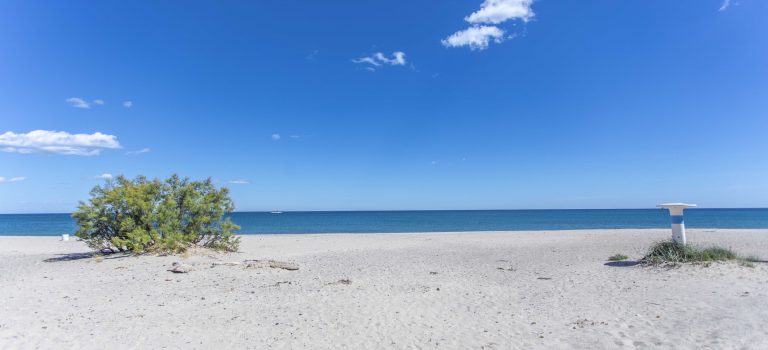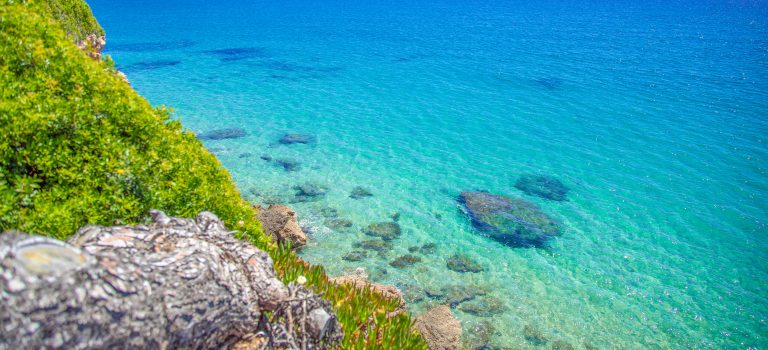UNSPOILED BEACHES
Distances near the sea


RIUDECANYES BEACH
The Riudecanyes stream flows between the boroughs of Mont-roig del Camp and Cambrils. It forms the tip of the Riudecanyes stream and a small lagoon. In the lagoon there are species typical of wetlands such as tamarisks, rushes and poplars, being a refuge for wildlife.
From the mouth to the south there are the unspoilt beaches of Mont-roig del Camp. First we find a small pebbly beach, which the stream has transported over time to the sea. Right after we arrive to a sandy beach surrounded by natural vegetation.
It is common to find posidonia, either in the sand or in the water. This is due to the Posidonia meadows facing the beach. Posidonia, which indicates excellent water quality, contributes to have crystal-clear water.
The unspoiled beach is not suitable for dogs. As Posidonia is a protected species it is not removed from the beach. The beach has a refuse collection service all year round and during the summer months it works more frequently.
How to arrive?


PIXEROTA BEACH
The Pixerota ravine gives its name to the wide golden sandy beach. In certain areas there are even dune systems.
It was Joan Miró’s favorite beach. The genius liked to go down, from his farmhouse, to Pixerota beach to swim and for physical exercise. It was the beach where he drew his well-known Mironian stars, which later became one of the most representative symbols of his work. The Pixerota beach inspired him to create one of his first pictorial works “Platja de Mont-roig”. A totem pole has recently been installed in the place where Joan Miró is believed to have painted this picture.
On Mont-roig and Miami’s coast there are still witnesses to the Spanish Civil War (1936-1939). There are two machine gun nest systems. One of the systems is located at La Pixerota, and the other on the beach La Casa dels Lladres, right at the beginning of Miami Platja.
They were defensive constructions commissioned by the government of the Second Republic to cope with possible attacks by sea and landings of Franco’s rebels troops. Machine gun nests are part of larger defensive structures, and today they are fully integrated into the coastal landscape where they were built.
The openings, where the machine guns of the Republican army were installed, are particularly noteworthy. The basic material used for its construction is mortar, but in the machine gun nests at the beach La Casa dels Lladres, they built in stones for camouflage.
How to arrive?


ESTANY SALAT BEACH
The Estany Gelat “Frozen Pond”, popularly called Estany Salat “Salty Pond”, combines a rich natural, landscape and historic interest. It is a coastal wetland formed at the mouth of the ravine of the same name and it is member of Red Natura 2000, an European initiative, that enhances the creation of a network for special protection areas.
This unique area is regularly visited by migratory birds and you can also find the fartet, a freshwater fish in danger of extinction. The vegetation is characteristic of this type of wetland area, including sea grass (Juncus maritimus) and salicornia arbustiva (Arthrocnemum fruticosum).
Both he Estany Gelat and the nearby creeks, used to be an important spot for smuggling, that is why one of the two carabineros’ checkpoints was installed on Mont-roig’s coastline. During the Anglo-Spanish war (1804-1809), Estany Gelat also witnessed a skirmish between the Spanish and British armies, as 25 British sailors stole a cart with supplies for the Spanish army and there was an exchange of fire in the area of Estany Gelat.
On one of the sides of the Estany Gelat, you may see the remains of a construction linked to the hunt that belonged to the Marquis of Marianao. The Estany Gelat ravine was the northern limit of the Marquis of Marianao’s hunting ground. Subsequently the preserve was sold and this is the beginning of Miami Platja’s foundation by the businessman Marcelí Esquius Garcia (1897-1969).
This enclave is situated at a crossroads: on one hand the GR92, that runs along Mont-roig’s and Miami Platja’s beaches and on the other hand, the short-distance footpath through the Estany Gelat ravine.
How to arrive?
B R E A T H E

